Here is my swift code for setting status bar hidden and style.
extension UIViewController {
public var privateStatusBarHidden: Bool {
return statusBarHidden
}
public var privateStatusBarStyle: UIStatusBarStyle {
return statusBarStyle
}
public func setStatusBarHidden(hidden: Bool, animated: Bool = false) {
statusBarHidden = hidden
if animated {
UIView.animate(withDuration: 0.25, animations: {
self.setNeedsStatusBarAppearanceUpdate()
})
} else {
self.setNeedsStatusBarAppearanceUpdate()
}
}
public func setStatusBar(style: UIStatusBarStyle) {
statusBarStyle = style
self.setNeedsStatusBarAppearanceUpdate()
}
public static func swizzleStatusBarHiddenPropertyForViewController() {
var original = class_getInstanceMethod(UIViewController.self, #selector(getter: UIViewController.prefersStatusBarHidden))
var changeling = class_getInstanceMethod(UIViewController.self, #selector(getter: UIViewController.privateStatusBarHidden))
method_exchangeImplementations(original, changeling)
original = class_getInstanceMethod(UIViewController.self, #selector(getter: UIViewController.preferredStatusBarStyle))
changeling = class_getInstanceMethod(UIViewController.self, #selector(getter: UIViewController.privateStatusBarStyle))
method_exchangeImplementations(original, changeling)
original = class_getClassMethod(UIViewController.self, #selector(UIViewController.swizzleStatusBarHiddenPropertyForViewController))
changeling = class_getClassMethod(UIViewController.self, #selector(UIViewController.emptyFunction))
method_exchangeImplementations(original, changeling)
}
@objc private static func emptyFunction() {}
}
Usage
UIViewController.swizzleStatusBarHiddenPropertyForViewController()
- for hide/show statusBar, in UIViewController
. self.setStatusBar(hidden: true/false)

